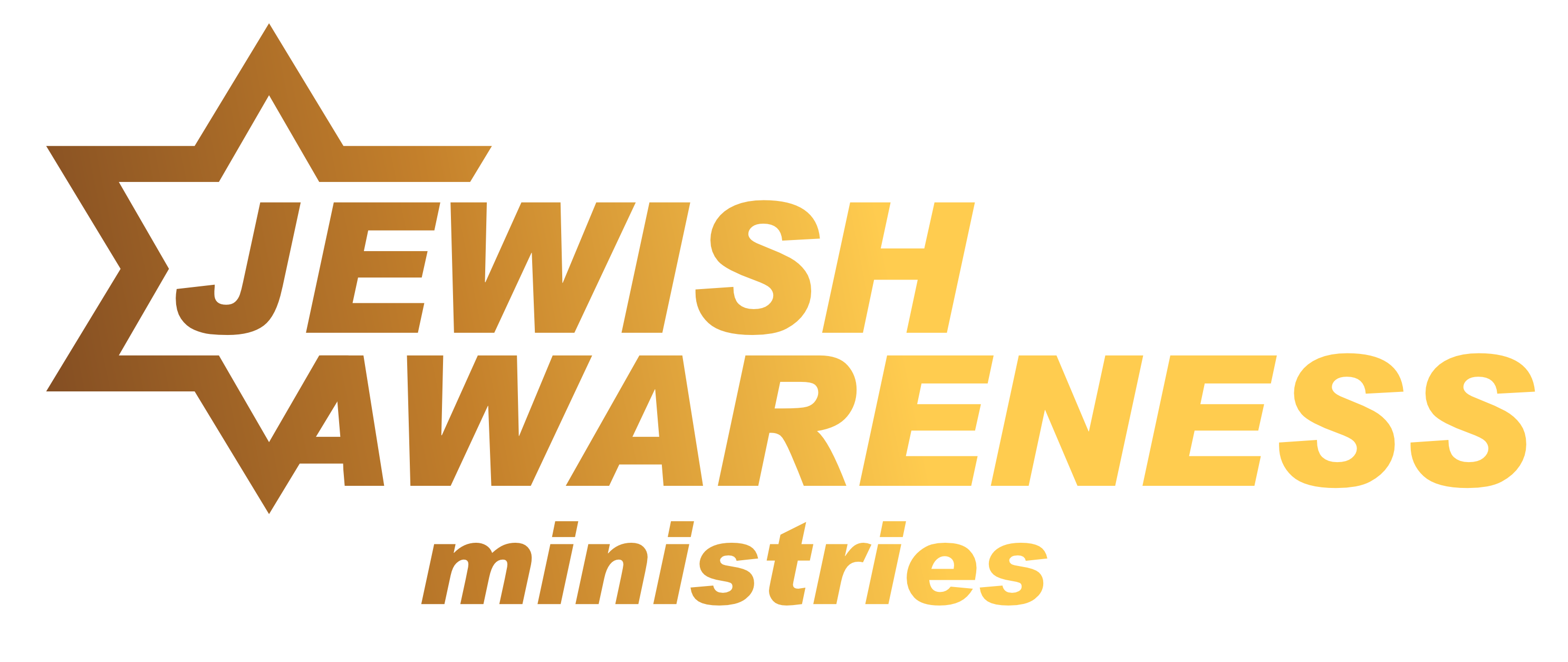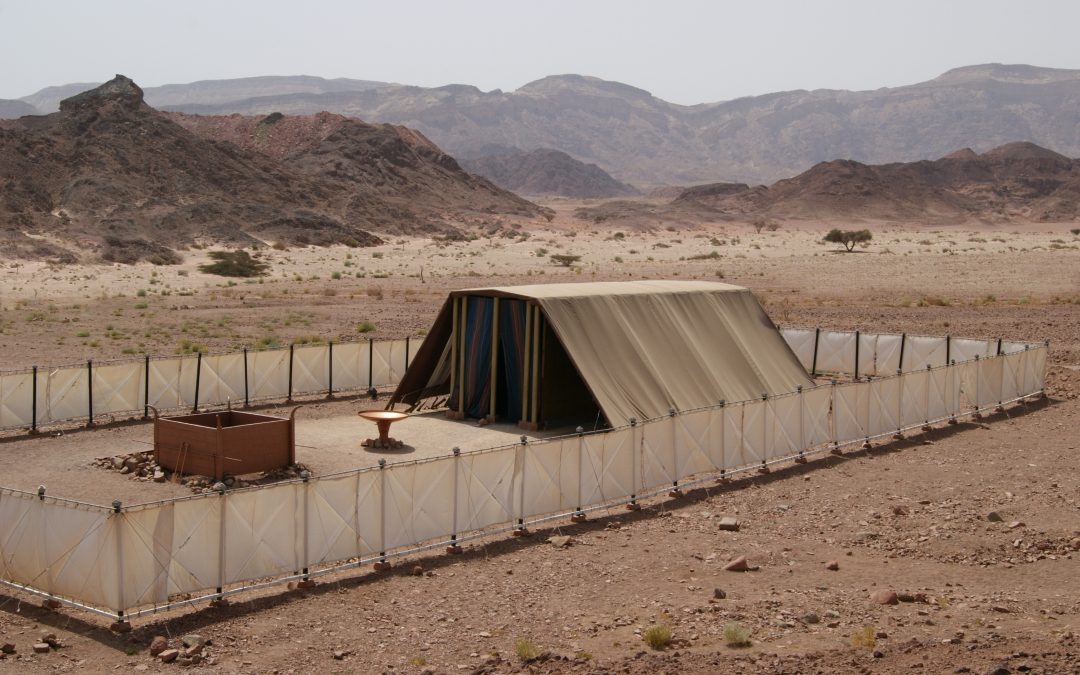Rev. Dan Bergman
“And Let them make me a sanctuary; that I may dwell among them. According to all that I shew thee, after the pattern of all the instruments thereof, even so shall ye make it.” Exodus 25:8-9
For almost 500 years, this would be the dwelling place of God among the children of Israel. On the outside were goat’s hair, ram’s hides and badger skins. On the inside was gold, silver, fine linens, beautiful tapestry, and above all – the presence of God! This was a magnificent mobile worship center that vividly pictured many different facets of the person of Messiah! Built around 1400 B.C., the Tabernacle was patterned and designed specifically by God Himself. This is important to realize as we consider how the Tabernacle, it’s furniture, and it’s offerings so vividly picture Jesus the Messiah! We will take an abbreviated look at some of the items involved in ancient Tabernacle worship, and as we do so, we will glimpse the Messiah. As it says in Hebrews 9:8,9 “the first Tabernacle… was a figure for the time then present.”
An Overview of the Tabernacle
According to Numbers 2:3, the tribe of Judah was to be situated right next to the entrance of the Tabernacle. This gate was the only way in or out of the Tabernacle court. Genesis 49:10 points us to the fact that the Messiah was to come from Judah.
If one were to view the outer court of the Tabernacle, and the layout of the various items of worship from a bird’s-eye view, it can be noticed that the layout forms the shape of a cross. Although the Tabernacle was nothing special to behold from the outside, it was very beautiful on the inside. Just as our Savior had no beauty that he should be desired,[1] He was “fairer than the children of men.”[2]
Word “fairer” here is “the beauty of all beauty”. It speaks of who Messiah would be, as the greater Son of David. This is not saying that He had the look of a Hollywood celebrity, but in contrast, that He would be in His love, care, mission, and righteousness, the most beautiful person to ever walk the planet.
Table of Shewbread
“Right across the Tabernacle, on our right as we enter, and in the full blaze of the golden candlestick, which almost seems to shine for the purpose of revealing it alone, stands the table of shewbread…”[3]
This table held 12 loaves representing the 12 tribes of Israel. Jesus declared Himself to be “the Bread of Life” numerous times in John 6. He is our spiritual sustenance in this life!
Brazen altar
This was the first item one saw upon looking past the gate moving inward and eastward toward the Tabernacle. “The brazen altar was at the gate of entrance, representing God’s claims. These claims must be met before God can fellowship the sinner. The altar demanded a sacrifice and blood.”[4]
The worshipper is instantly confronted with his need for a blood sacrifice to atone for his sins before a holy God. Hebrews 9:12 tells us that “Neither by the blood of goats and calves, but by his own blood he entered in once into the holy place, having obtained eternal redemption for us.”
Laver
The Laver or wash basin was placed between the altar and the entrance to the Tabernacle itself. It’s use was so necessary in Levitical worship, that if the priests in service neglected to use it, they would die.[5] We have been completely cleansed in Christ from all defilement. Speaking of the Church, Ephesians 5:26,27 says, “That he might sanctify and cleanse it with the washing of water by the word, that he might present it to himself a glorious church, not having spot, or wrinkle, or any such thing; but that it should be holy and without blemish”, and 1 John 1:9 tells the believer that “If we confess our sins, he is faithful and just to forgive us our sins, and to cleanse us from all unrighteousness.“
It is through the sacrifice of the Messiah, that we are declared clean! It is only through Him that we can now approach God!
Golden Lampstand
Moses was commanded to make a seven branch lampstand out of one talent of gold. This was the only source of light inside the Tabernacle. One talent of gold would be 1,500 ounces in today’s vernacular.[6] Today this Menorah would be worth $1,891,500! In John 1, Jesus is referred by to as “the Light” 6 times! In John 8, 9, and 12 Jesus refers to Himself as “the Light of the world!” This is foreshadowed by Isaiah 9:1, a prophecy about the Messiah bringing light to the region of Galilee!
The Offerings Themselves
For Christ is not entered into the holy places made with hands, which are the figures of the true; but into heaven itself, now to appear in the presence of God for us: Nor yet that he should offer himself often, as the high priest entereth into the holy place every year with blood of others; For then must he often have suffered since the foundation of the world: but now once in the end of the world hath he appeared to put away sin by the sacrifice of himself.” Hebrews 9:24-26
Isaiah 53 tells us that the LORD would make the soul of the Messiah an offering for sin. The burnt, meat, peace, sin, and trespass offerings all symbolize some facet of who Jesus the Messiah is. 1 Corinthians 5:21 speaks of Christ as our sin offering, “For He hath made Him to be sin for us who knew no sin; that we might be made the righteousness of God in Him.”
Ephesians 5:2 says that Jesus the Messiah “hath given himself for us an offering and a sacrifice to God for a sweetsmelling savour.” speaking of Him as our burnt offering.
He is the One casting the shadow that is clearly seen throughout the Tabernacle! Come to Him, for He is the only way to experience true forgiveness!
End Notes
[1] Isaiah 53:2
[2] Psalm 45:2
[3] A. B. Simpson, “Christ in the Tabernacle” Christian Publications Inc., Harrisburg, PA, p.87
[4] W.S. Hottel, “Typical Truth in the Tabernacle” Union Gospel Press, Cleveland, OH, p.98
[5] Exodus 30:17-21
[6] Theodore H. Epp “Portraits of Christ in the Tabernacle” Back to the Bible, Lincoln, NE, p.118

